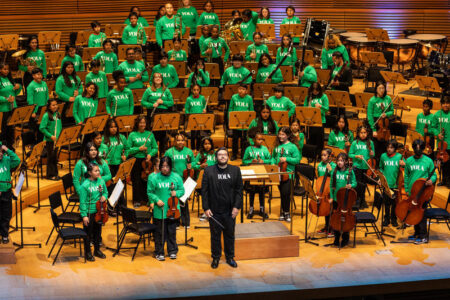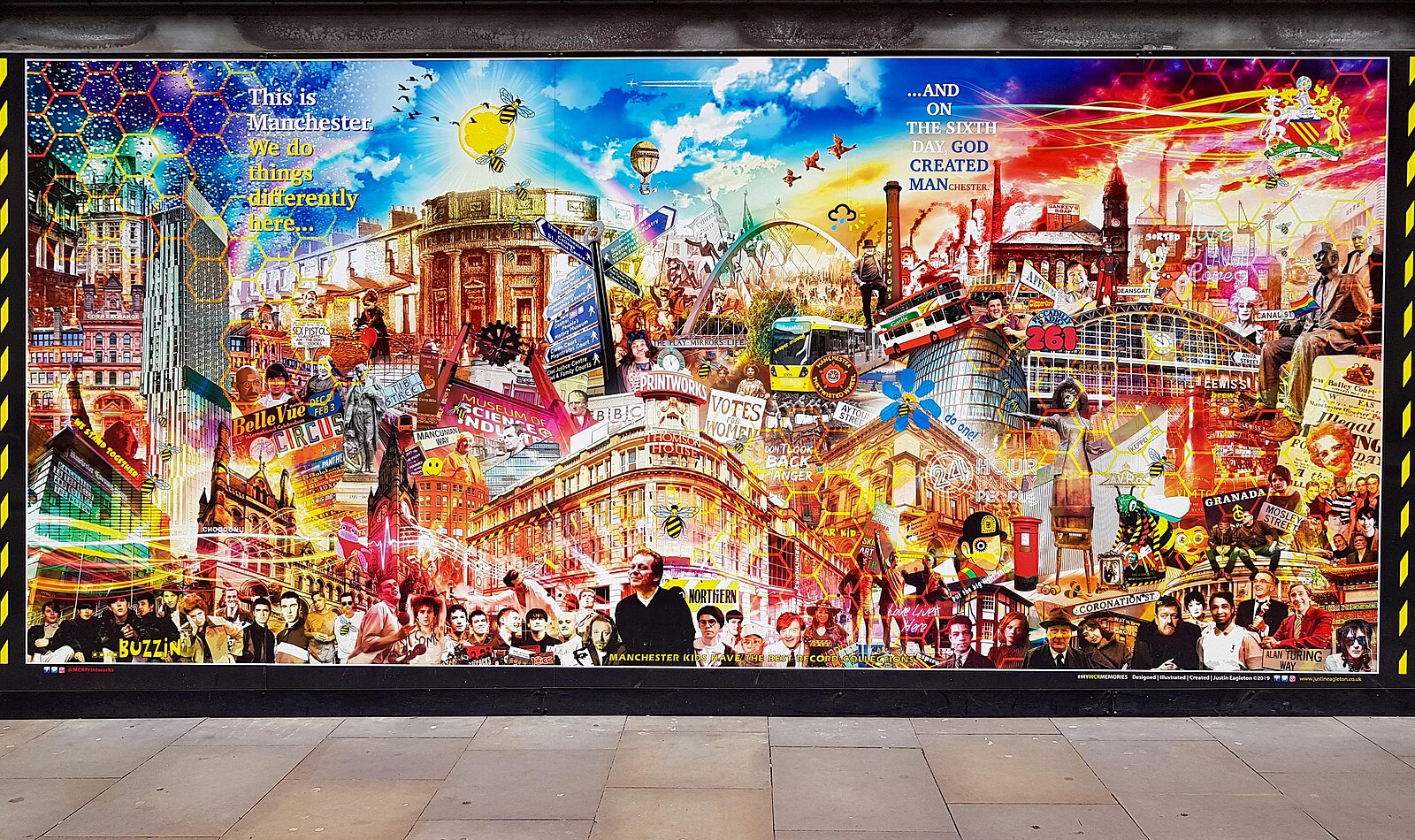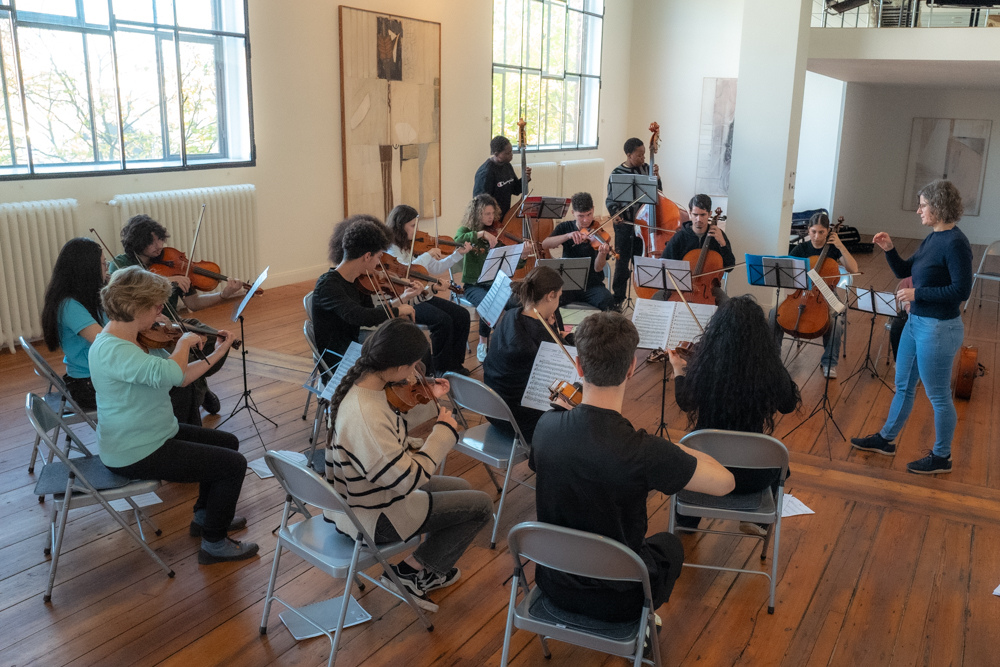
Topics
YOLA Gives ‘Collective Composition’ New Meaning
Ensemble Editorial Team

YOLA Institute Children’s Orchestra led by Daniel Jacobs performing at Walt Disney Concert Hall on April 23, 2024. Photo: Paul Cressey Photography.

We know that many programs use collective composition as a creative boost for students. But an experiment at the Los Angeles Philharmonic’s YOLA Institute Children’s Orchestra was a new one for us at The Ensemble. YOLA teaching artist and conductor Daniel Jacobs (a Firebird Fellow in AIM/Academy for Impact through Music), inspired by master teaching artist Daniel Trahey, folded a collective composition inside an iconic symphonic work, grounding it in melodic and rhythmic motifs from that work. In their spring concert at Walt Disney Concert Hall, the ensemble, which features students from all the YOLA sites, performed Tchaikovsky’s 2nd Symphony Finale…with a collective composition in the middle of it.
We reached out to Daniel and his YOLA teaching artist colleagues, Emma McCartney and Claudio Alcantar (also Firebird Fellows), to learn about their thinking and process in this experiment.

The YOLA team wanted the collective composition to evoke sounds of the students’ home city, Los Angeles, California. So they took a minimalist approach similar to that of John Adams or Terry Riley. First, they asked the sectional teaching artists to work with the students to investigate and play around with all the rhythmic motives in the Tchaikovsky piece. After a few weeks, they asked every student to write a four- or eight-bar phrase in C, based on their explorations. The group collectively decided how to layer them, and the students came up with the idea of making it chaotic and loud by the time Jacobs returned to the podium to lead the students back into the final part of Tchaikovsky’s piece and finish the performance.
“For [the students], I think the project started out a little overwhelming, because it was very new for this age group,” says Jacobs. “But by the end, they were more expressive, vocal, and confident, and also more knowledgeable about the score.”
Jacobs continues, “I think the students enjoyed it and looked forward to rehearsing the Tchaikovsky more than the other repertoire. Plus, you can hear their powerful sound after we finish the collective composition portion of the performance and return to the reprise of Tchaikovsky’s opening chords. It was exhilarating to be on that podium!
“If I did it again, I would add clearer steps along the way for the sectional TAs. I think they were the ones for whom the project was most challenging, because it was not what they usually teach. Emma and Claudio were a great support system during the experiment.”
See what they came up with on Jacobs’ YouTube page.
Has your program experimented with new pathways for collective composition? If so, write us about it!
Related Content
All Regions, Community Building, Funding & Support, Gather Together, News and Resources, North America, Perspectives & Collective Action, Teaching & Learning
Genesis Inspiration Foundation Arts Education Grants for U.S. Nonprofits
longy-admin
All Regions, Collaborations, Community Building, Events/Performances, Gather Together, News and Resources, North America, Strings
Young Musicians Celebrate Sephardic-Latino Connections
longy-admin
Collaborations, Community Building, England, Europe, Featured, Gather Together, Teaching & Learning

Arts Communities Drive Manchester Forward
longy-admin

Collaborations, Community Building, Europe, Featured, Gather Together, Germany, Strings, Teaching & Learning

From an Empty Airport to Downtown Berlin, a Music Program Still Soars
longy-admin


